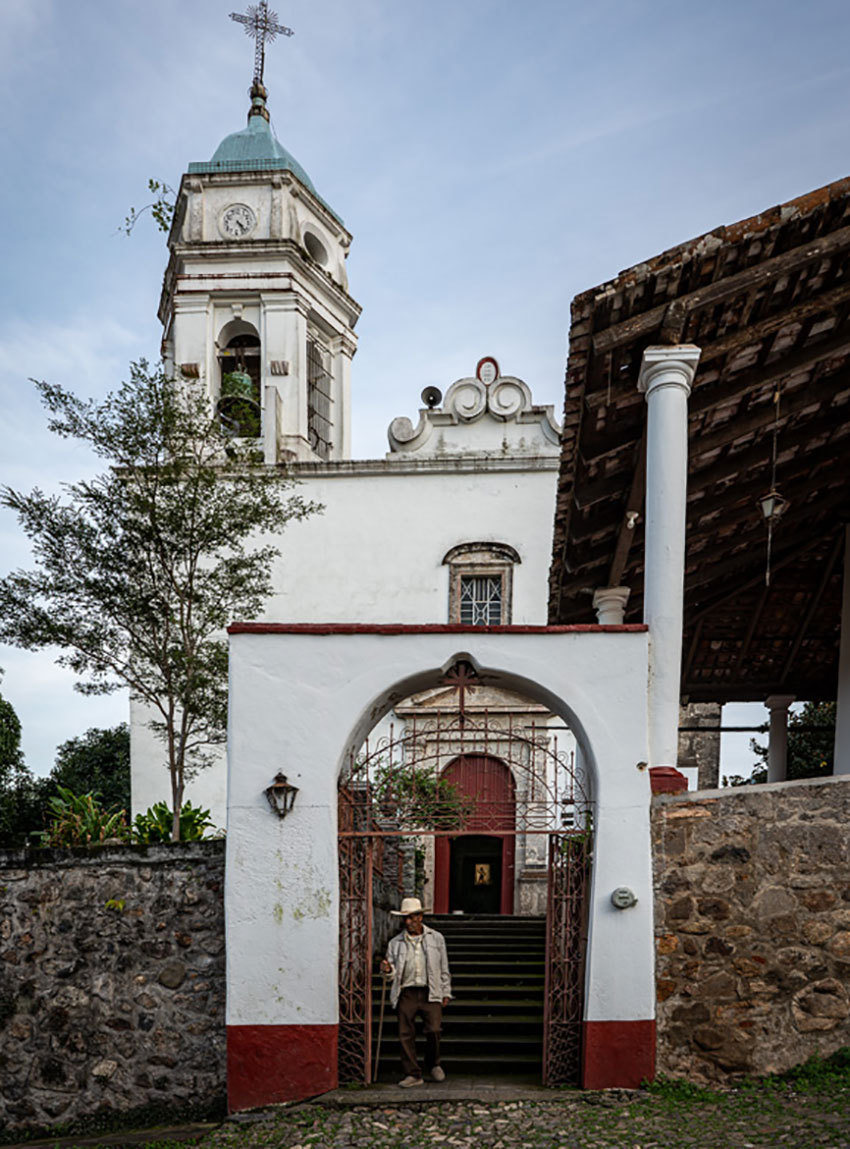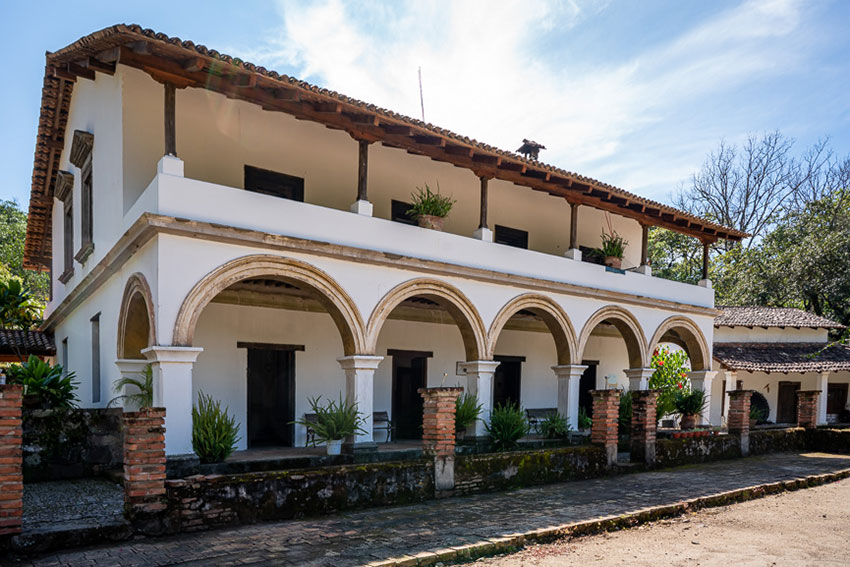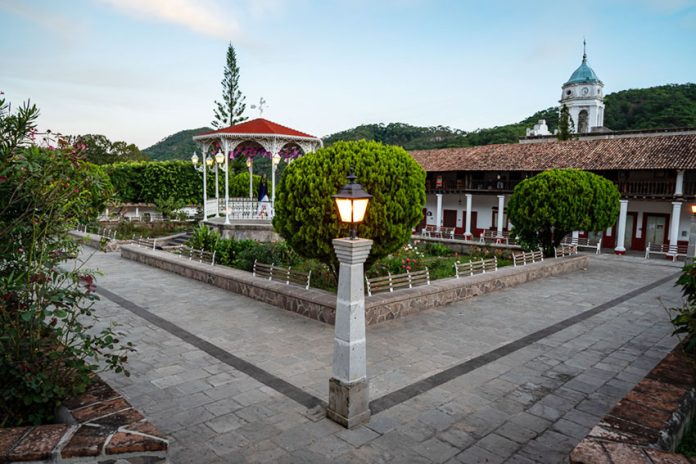The sudden shock of the pothole jolts me out of my gentle slumber, and the next curve on the drive rocks me back and forth in the car. We’re not far outside of Puerto Vallarta, but judging by the condition of the road, we seem to be in the middle of nowhere.
It’s hard to believe that this is the “improved” road and I can’t imagine how the journey was just a few short years ago.
As the highway winds its way through the Sierra Madre mountains to the east of the popular tourist resort town, a sudden change takes place. Gone are the sandy beaches, replaced by the lush greenery of the mountainous jungle. Gone are the traffic-clogged streets, replaced by the open, albeit terrible, highway. Gone are the crowds of the Malecón pedestrian boulevard, we are now among the quiet cobblestone streets of San Sebastián del Oeste.
San Sebastián lies in the narrow valleys of the Ameca and Los Reyes rivers, which wind through town and the neighbouring haciendas. The rugged topography of the surrounding area ― think steep peaks, thick jungle, and deep ravines ― created a wealth of minerals and metals. When the gold, silver and lead were discovered in the area in the early 1600s, miners moved to the area and established up to 30 mines and 10 haciendas to support the industry. In its heyday in the mid-19th century, over 20,000 people lived in this once booming town.
But following the Mexican Revolution in 1910, many foreign-owned mining companies left the area, and by 1921 the mines were shut down. Today, just a quarter of that population remains in the municipality, and some suggest the town itself has less than 600 people. As such, life moves at a much slower pace, especially on the weekdays, when I visited.
In fact, it feels as if the town hasn’t changed much since the early 1900s. Crossing the 19th century straight bridge into town felt like I was transported back to a time when horse and carriage roamed the narrow streets. Despite the few cars that were there, most people still walked around in no rush to get to where they’re going. One of the few signs of modernity are the well painted matching white and burgundy walls that adorn most of the buildings, from the hotels and restaurants to the church, museums and haciendas.
Perhaps the most famous of these haciendas is Hacienda Jalisco, situated about a 20-minute walk outside of town. Once owned by Hollywood artist Bud Acord, the hacienda has played host to many actors and directors such as John Huston, Elizabeth Taylor, Richard Burton and Peter O’Toole.

Spanish mining companies built the hacienda in the 1800s to support the industry as they plundered the surrounding hillsides for silver and gold. At one point in time it had its own hydroelectric plant, but today that is long gone. In its place, oil lamps, candles and fireplaces aid the guests who stay in the hotel.
I walk the long path from the highway to the front gates, enamored by the buzzing of what sounds like thousands upon thousands of insects in the trees and bushes that line the road, although none was visible to identify what they were. Just past a small airstrip and over a small bridge that leads through the front gates, the gardens of the hacienda spread out in front of me. To the right, the hacienda’s main building stands, where a museum dedicated to the mining history and story of the hacienda exists on the lower level. Through the back, a cozy terrace leads to the kitchen and an old underground cellar.
One of the other ex-haciendas worth a visit is La Quinta Mary. Located just over the straight bridge as you enter town, La Quinta Mary produces organic coffee. The high altitude and favourable climate make San Sebastián del Oeste one of the 10 regions in Jalisco that produce high quality coffee, and at La Quinta Mary you can walk among the coffee plants, watch as the workers roast the coffee, and sample some of the varieties available.
As with any colonial town, the main plaza is the gathering hub for the local community. San Sebastián’s plaza principal dates to 1774 and is perhaps one of the most picturesque I’ve visited in Mexico. An intimate bed of flowers surrounds the central kiosk, along with a stone fountain and well manicured shrubs, all juxtaposed with the steep, looming peak of La Bufa to the southeast.
In the plaza, older gentlemen gather in the morning and relax on the benches as the day goes by. School children play on the basketball courts behind the plaza, while a small group of tourists mills about the grounds, taking photos and making memories. The hungry find a seat on the quaint patio of El Fortín, a local restaurant serving international cuisine. And overlooking it all, the aqua-coloured church tower stands out against the horizon.

That church is one of the highlights of San Sebastián del Oeste. Originally built by Augustinian friars in the 17th century, it was most recently reconstructed after a large earthquake struck the area in 1868. Through the iron gates and up the stairs of the church, visitors can walk around inside the neo-classical building. In the courtyard in front, the parish museum hosts artifacts and items from pre-Hispanic times through the colonial era, with a focus on religious items. The museum also hosts a brief history of mining and the town of San Sebastián.
Just behind the church, in what is known as the Plaza del Hueso, or Portal of the Bone, the Casa Mexicana store hosts a wide selection of artisans’ crafts by local artists, from finely crafted chess boards to jewelry and blankets.
For those who enjoy nature, the summit of La Bufa can be reached via 4×4 to the base and a hike up to the top. Rumour has it that on clear days you can see all the way to Puerto Vallarta and the ocean beyond.
Across the curved bridge to the east of the main plaza, a sign hangs over an open doorway that reads Taller y Platería. Inside the cramped space sits a middle-aged man looking down intensely under a bright light, surrounded by many pieces of shiny jewelry. I’ve found one of the modern connections to the past: the local silver maker. Even though the raw silver needs to be brought in from central Mexico, this tiny shop provides a sliver of silver history of the region.
The man looks up from his work desk and greets me with a warm, small-town hello. We talk briefly about his work, and the town. “Muy tranquilo,” (very quiet) he says, explaining what he likes most about the town. A different world from Puerto Vallarta and Guadalajara, he points out.
“And difficult to get to,” I add, but that only adds to its deep Mexico charm, making San Sebastián del Oeste a very worthy destination.
Mark Locki is a Canadian writer and a frequent contributor to Mexico News Daily.
